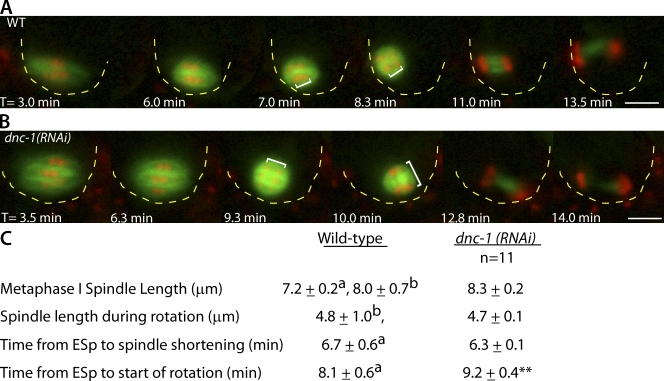Figure 8.
DNC-1 is partially required for wild-type meiotic spindle rotation. (A and B) Representative images from live in utero time-lapse sequences of meiotic embryos expressing GFP::tubulin and mCherry::histone. (A) Wild-type (WT) meiotic spindle rotation. (B) Meiotic spindle movements in a dnc-1(RNAi) embryo (n = 8/11). The white brackets indicate the distance between homologues at the start and end of rotation. Yellow dashed lines outline the cell cortex for clarity. T = 0 is the exit from the spermatheca. Bars, 5 mm. (C) Quantification of meiotic spindle movements and length in dnc-1(RNAi) embryos compared with wild type. a, Ellefson and McNally, 2009; b, Yang et al., 2003; ESp, exit from the spermatheca; **, P < 0.05. The rotation defect observed in dnc-1(RNAi) was weaker than that observed in dhc-1(RNAi) embryos (Ellefson and McNally, 2009). This could be caused by incomplete knockdown of DNC-1. In C. elegans, dynactin knockdown has been previously found to result in two female pronuclei (Gönczy et al., 1999b; Terasawa et al., 2010), which might be a result of rotation failure.

